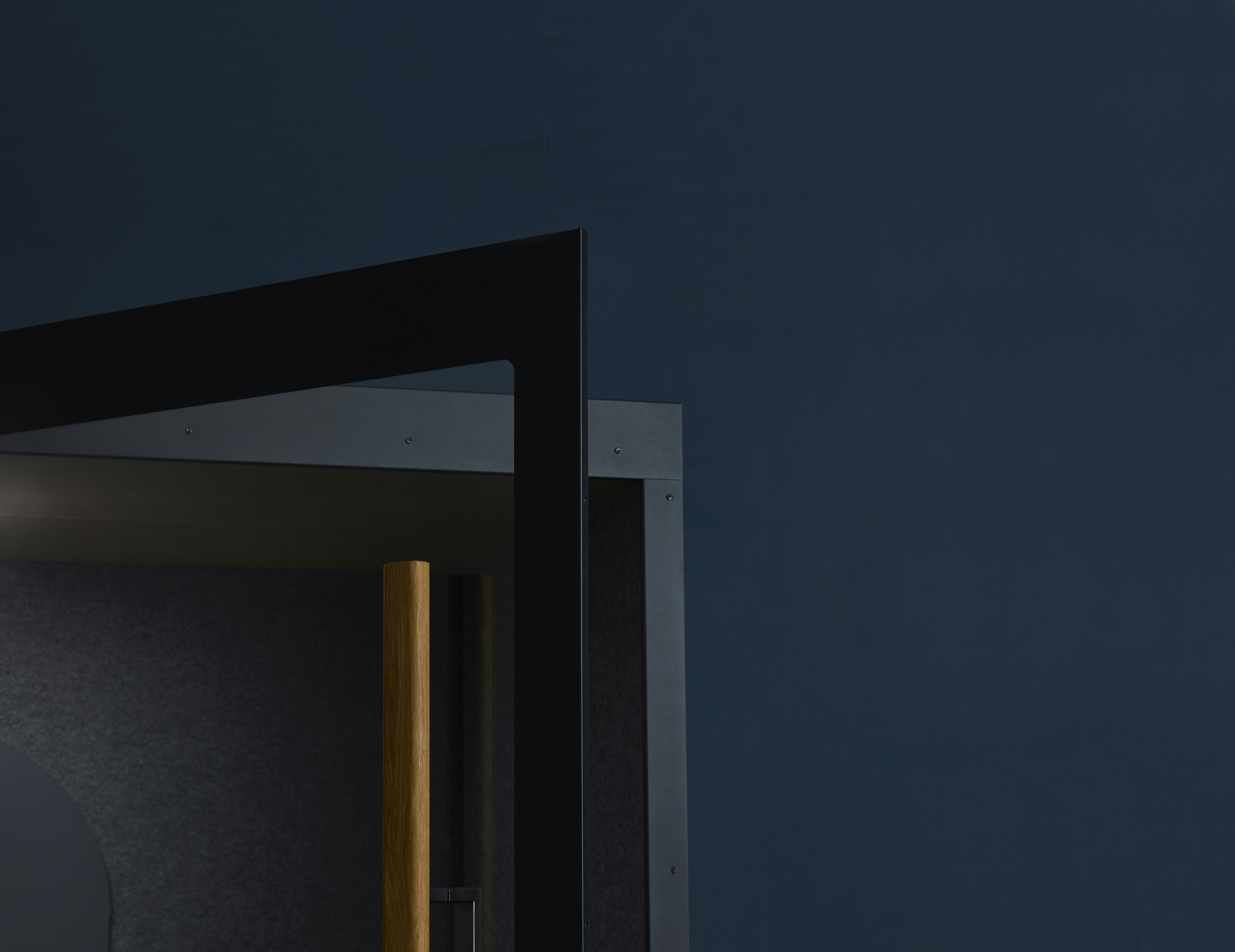Picture this: you’ve just finished putting together the perfect basement setup – be it your new home office, your personal music studio, or a recreational space. There’s just one problem – the noise. It seems to reverberate off everything, disturbing the peace upstairs.
But don’t fret – there’s a solution to this conundrum, soundproofing! This article will guide you through an effective, straightforward process on how to soundproof your basement ceiling.
With this knowledge, you’ll soon be well on your way to enjoying your basement activities without causing a ruckus above ground.
Understanding Soundproofing
Understanding the concept of soundproofing
Soundproofing refers to the process of minimizing or eliminating the transfer of sound from one area to another.
It involves the use of certain materials and techniques to prevent sound waves from penetrating through walls, ceilings, and floors, keeping your space quieter and more peaceful.
As you dive into the world of soundproofing, you’ll realize that it involves a lot of science and expertise to effectively reduce noise incursion.
How Sound travels and how it can be blocked
Sound travels in waves, much like ripples in a pond after a stone is tossed into it. When an object vibrates, it causes the air particles around it to move, creating waves of pressure that our ears perceive as sound.
To successfully block sound, you need to interrupt its path. This can be done by adding mass to the walls, sealing any gaps, or creating a gap or breaks in the path of sound – a technique known as decoupling.
Types of noises: Airborne and Impact
In the world of acoustics, there are two primary types of noises – airborne and impact. Airborne noise is the kind that travels through the air, like a voice or a musical instrument.
Impact noise, on the other hand, commonly referred to as footfall noise, is produced when an object strikes or shakes another object, like a ball bouncing on a floor or footsteps on a hardwood floor. Both types of noise can be problematic, but they require different soundproofing strategies.
Why You Need to Soundproof Your Basement Ceiling
Minimizing noise transfer to upper levels
Your basement can become a hub of activity and noise, especially if it’s being used as a recreational room, home cinema, or a playroom for kids.
Soundproofing the basement’s ceiling helps to contain this noise, ensuring it doesn’t infiltrate the rest of your house, thereby maintaining peacefulness and quietness in the upper levels.
Creating a quiet space
Alternatively, if you’re planning on transforming your basement into a tranquil home office or a quiet bedroom, soundproofing the ceiling is equally important. It helps to block noise from the upper floors seeping into your serene basement oasis.
Increasing privacy and sound quality
Soundproofing is also essential in improving privacy in your space, particularly if you hold sensitive business meetings or if the basement is used as a bedroom.
Moreover, should your basement function as a music room or home theater, soundproofing will enhance the sound quality significantly by preventing echos and reverberation.
Soundproofing Materials
Understanding the different types of soundproofing materials
There’s a wide range of materials available for soundproofing, each serving a particular purpose. Among them include insulating materials, absorption materials, and decoupling materials. The type you choose will depend on your specific needs and the kind of noise you’re dealing with.
Reviewing insulating materials
Insulating materials are typically used to buffer against airborne noise. They’re soft and fluffy, much like a sponge for the noise. Materials such as fiberglass, mineral wool, and polyester provide excellent sound absorption and are quite fire resistant.
Comparing Absorption Materials
Absorption materials help to reduce the intensity of sound waves as they pass through walls and ceilings.
They soak up the sound waves, minimizing reflection and echo within the room. Foam panels, sound-absorbing paint, and even some curtains and carpets are examples of these.
Discussing Decoupling Materials
Decoupling materials work by creating a physical break in the continuous structure in which sound waves can travel. They’re effective at reducing both airborne and impact noise. Resilient channels, isolation clips, and hat channels are commonly used for this purpose.
Preparing Your Basement Ceiling
Cleaning the basement ceiling area
Before you begin the soundproofing process, it’s crucial to clean the basement ceiling thoroughly. Remove any dust, dirt or cobwebs that may be present. Remember, a clean surface will allow the soundproofing materials to adhere better and function more effectively.
Inspecting the ceiling for cracks and gaps
After cleaning, carefully inspect the ceiling for any cracks or gaps. Sound can easily seep through these, so you’ll want to seal them with an acoustic sealant prior to beginning the soundproofing process.
Addressing any existing acoustic or structural issues
If you notice any major structural problems or areas of concern during your inspection, it’s best to fix these first before proceeding with the soundproofing. This might involve calling in a specialist to assess a potential mold problem or engaging a builder to address a structural issue.

Applying Insulation
Choosing the right insulation
The type of insulation you choose for your basement ceiling largely depends on the dominant type of noise you’re dealing with. You may need to use a combination of several materials to effectively block both airborne and impact noise.
How to install insulation
Installation varies depending on the type of insulation used. Generally, insulation is placed between ceiling joists before drywall is installed.
Safety should be your priority during installation. Always wear protective equipment like gloves, coveralls, a dust mask, and safety goggles to protect yourself from the fine fibers of insulation.
Safety measures while handling insulation
As mentioned above, safety measures are paramount when handling insulation. Always read and follow the manufacturer’s safety instructions.
With fiberglass, for instance, tiny particles can irritate the skin and eyes, so it’s advisable to wear long-sleeved clothing, eye protection, and a mask to prevent inhalation.
Installing Drywall
Choosing the right drywall
When soundproofing your basement, consider using soundproof drywall. This type of drywall contains layers of various materials that provide a greater mass, hence better soundproofing. Resistant to both impact and airborne noise, it’s an excellent choice for basement ceilings.
Installation process of drywall
With the right tools and some help, you can install drywall yourself. After the insulation, hang the drywall using screws, ensuring you fit it snugly against the wall. You’ll want to use resilient channels or isolation clips to add an extra level of decoupling.
Ensuring proper sealing around the edges
Once the drywall is up, it’s essential to seal the seams and edges properly. This helps keep the sound from sneaking through these gaps. Use acoustic sealant to fill in around the edges of each panel before taping and mudding the seams.
Adding a Drop Ceiling
Benefits of a drop ceiling
In addition to drywall, you may want to consider adding a drop ceiling for an extra layer of soundproofing.
A drop (or suspended) ceiling acts as an additional barrier to sound transmission. Moreover, drop ceilings improve the aesthetics of your basement by concealing ductwork, pipes, and wires.
Steps to install a drop ceiling
Installing a drop ceiling involves attaching a grid system directly to the existing ceiling or hanging it from joist hangers.
Then, sound-absorbing tiles are placed into the grid. There’s a wide variety of tile materials and designs available, so you can choose based on your soundproofing needs and desired style.
Choosing the right tiles for a drop ceiling
In regards to the choice of tiles for your drop ceiling, you need to go for ones with superior sound blocking and absorbing properties. Fiberglass tiles with a high Noise Reduction Coefficient (NRC) tend to absorb more sound waves compared to regular tiles.
Using Mass Loaded Vinyl (MLV)
Understanding the benefits of MLV
Mass Loaded Vinyl (MLV) is a soundproofing material renowned for its high-density yet thin and flexible nature. It’s particularly effective at blocking airborne sound due to its mass. It also acts as an extra layer of insulation, which can help to reduce energy costs.
Properly installing MLV
Installing MLV involves cutting it to fit your space, attaching it to the ceiling (often above the drywall), using screws or nails, and then sealed with acoustic caulking.
For the best results, it’s essential that the MLV panel is fully in contact with the ceiling so that it can efficiently block sound transmission.
Considering the weight and thickness of MLV
Although MLV is thin, it carries a significant amount of weight due to its density. You’ll need to consider this before installation, making sure your ceiling can support this weight without risking structural damage. Conversely, the thickness you choose will also directly determine how much sound the MLV can block.
Consideration of Soundproofing Paint
Understanding soundproofing paint
Soundproofing paint is a thick, water-based paint that can add a slight improvement to your existing soundproofing efforts.
It contains sound-absorbing fillers that can help to muffle a small amount of noise. However, it should be noted that this should not be your primary soundproofing measure, but rather an auxiliary one.
How to apply soundproofing paint
Application of soundproofing paint is much the same as regular paint. You’ll need to prepare the surface, starting with a clean, dry area.
Then apply multiple layers of the paint, letting each layer dry fully before applying the next. Keep in mind you may need more coats than regular paint to achieve the proper thickness.
Effectiveness of soundproofing paint
While soundproofing paint is a useful addition, it’s not a complete solution to noise problems. It can help to slightly reduce airborne noises, but it is not as effective in controlling impact noise. Therefore, for the best soundproofing results, it should be combined with other soundproofing measures.
Monitoring the Results
How to test the effectiveness of soundproofing
After installing your soundproofing measures, it’s important to test their effectiveness. You can do this by playing music or noise in your basement at a volume that previously caused issues, then listening in upstairs rooms to see how much sound is coming through.
Mitigating any remaining noise
If there’s still some noise coming through after your soundproofing efforts, don’t worry – there are further steps you can take to reduce it. You may need to add more insulation or try different methods of decoupling, for example. Persist and experiment – soundproofing can often be a game of trial and error.
Maintaining your soundproofed basement ceiling
To ensure your soundproofing remains effective over time, it’s vital to conduct regular maintenance checks. Look out for any degradation in your soundproofing materials or gaps where sound might escape. Addressing these promptly will ensure your basement remains the peaceful sanctuary you desire.




